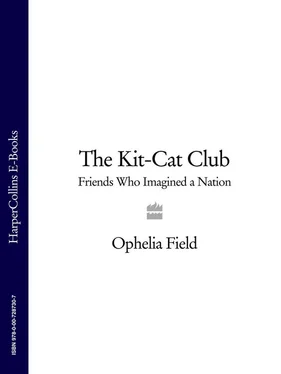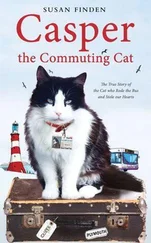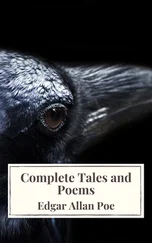1 ...6 7 8 10 11 12 ...35 Like Westminster, Charterhouse ran a long, spartan day from six in the morning to six in the evening in summer, with an hour's later start in winter, and taught the classics (mainly Cicero and Horace) with a heavier dose of stick than carrot.
Entering as a scholarship boy in 1686, the 14-year-old Addison formed a close friendship with another scholar the same age, who would become his lifelong companion and collaborator. This boy, Richard (or ‘Dick’) Steele, had already been at the school for two years when Addison arrived.
Steele's father, an Anglo-Irish gentleman from Dublin, died in his early childhood, a fact Steele believed left him calamitously hypersensitive forever after. Steele dramatized the event in a later essay:
I remember I went into the Room where his Body lay, and my Mother sat weeping alone by it. I had my Battledore [a toy] in my Hand, and fell a-beating the Coffin, and calling Papa; for I know not how I had some slight Idea that he was locked up there. My mother catched me in her Arms, and transported beyond all Patience of the silent Grief she was before in, she almost smothered me in her Embrace, and told me in a Flood of Tears, Papa could not hear me and would play with me no more, for they were going to put him under Ground, when he could never come to us again. 26
Steele's mother—whom he remembered as ‘a very beautiful Woman, of a Noble Spirit’ 27 —sent him away from Ireland, to live with his wealthier, childless aunt and uncle in England, and it was they who entered him at Charterhouse in 1684. His mother died that same year, orphaning him fully.
Steele's uncle was private secretary to the 1st Duke of Ormonde, the same Lord Lieutenant of Ireland served by Congreve's father, and it was Ormonde who, as a governor of Charterhouse, arranged for Steele's admittance. One letter from the schoolboy Steele to his patroness-aunt survives. It includes a formal apology for not writing more often, mixed with a pained awareness of his dependency, expressed with less than complete humility: ‘Madam, should I express my gratitude for every benefit I receive at Your Ladyship's and my good Uncle, I should never sit down to meat but I must write a letter when I rise from table.’ 28 Steele addressed successive patrons with similarly mixed feelings throughout his life.
Their intellects, and the loss of their mothers when they were 12, were what Addison and Steele had in common; the rest was all contrast. Steele was short and square-bodied, with a ‘dusky’ complexion that, combined with his fading Irish accent, would have been interpreted by contemporaries as indicating lowly birth; 29
Addison was tall for his age, with pale blue eyes and the pallor of a bookworm. Soon the advantage of Steele's previous years at the school was erased as he came to idolize his new friend.
Addison invited Steele home for the holidays. Addison's father was Dean of Lichfield, having settled there after an exotic life as chaplain to the British garrisons at Dunkirk and Tangier. Addison had immense respect for his father, who imbued him with a profound belief in selfcontrol. In 1686, the Dean was raising four children alone—three boys and a girl, of whom Joseph was the oldest. Steele admired how the Dean taught his sons to vie for his favour and called it ‘an unspeakable Pleasure to visit or sit at a Meal in that Family’. 30 Steele was warmly welcomed into the Lichfield deanery that school holiday, and recalled how Addison's father ‘loved me like one of them’. 31
Addison only stayed at Charterhouse for a year before being elected to his father's former Oxford college, Queen's, at the age of 15. This confirmed Steele's belief in Addison's superiority; Steele remained ever after several steps behind his friend academically. Steele entered Christ Church, Oxford, in December 1689, by which time Addison had been elected to one of the ‘demyships’ (scholarships offering free lodging) at Magdalen College. Christ Church, to which Steele was sent thanks to his uncle's connections, did not suit him well. It had stood on the losing side of the previous year's Revolutionary politics (in contrast to Magdalen, which had resisted James II's demands) and contained more nobly born students than the rest of Oxford's colleges. When Steele went up, his aunt gave him a pair of gloves and a sword to help him fit in.
After a year, Steele asked his uncle to pull strings with the Dean of Christ Church to get him a scholarship, reporting that though he had gained his tutor's respect, ‘these places are not given by merit but are secured by friends’. 32 When his uncle's efforts failed to produce the scholarship, Steele moved to Merton College to accept one there instead. Steele left Merton in May 1692 and enlisted in the army as a ‘wretched common Trooper’, 33 since he lacked the funds to buy an officer's commission. Years later, Steele recalled Oxford students who window-shopped, played billiards and bowls, and who were ‘seized all over with a general Inability, Indolence and Weariness, and a certain Impatience of the Place they are in’. 34 Steele sounds as though he was well acquainted with these ‘loungers’, but he probably left university voluntarily, out of patriotic duty, rather than because he was expelled, as Jonathan Swift later hinted. Steele would have watched the fireworks in Oxford celebrating the Treaty of Limerick after William's victory in Ireland, and the troops returning from the Irish wars. Though Steele missed his chance to participate in this Protestant victory in his homeland, he could still serve the Protestant cause on the Continent. Since the regiment he joined belonged to his uncle's patron's son, enlisting may also have been a direct order from his uncle that Steele could not refuse.
Addison did not feel a similar pull towards the adventure of war. He remained to wander the water walks and gardens of Magdalen, translating and composing Latin poetry to the acclaim of his fellow academics. These pastimes between teaching duties sound more plausible from what we know of Addison than his later confessional lines referring to his ‘heedless steps’ upon ‘the slippery paths of youth’. 35
One thing Addison never let himself be was heedless, and his decision not to enlist was decidedly careful of his own person.
When Addison sent a poem flattering Dryden's talent to the poet in London, Dryden and Tonson included it in the Miscellany Poems they co-edited in 1693. 36 Addison's 1694 poem, ‘An Account of the Greatest English Poets’, then summarized the history of English poetry, culminating—implausibly to modern judgement—with Charles Montagu at its pinnacle. Addison immediately found a flattered benefactor in the 33-year-old Chancellor of the Exchequer. Steele later recalled that Congreve was the instrument of Addison's ‘becoming acquainted with’ Montagu. 37 How Congreve and Addison first met, however, is uncertain. Most likely it was through Dryden and/or Tonson, following Addison's inclusion in the Miscellany , or perhaps Tonson invited Addison home to the Fleet Street house the publisher then shared with Congreve. Either way, there was soon mutual respect between Addison and Congreve, whose respective specializations in Latin and Greek literature spared them direct rivalry.
By 1695, Addison was studying to take orders, though he increasingly wished neither to follow his father into the Church nor to remain a university tutor. Addison therefore sought to add a further patron to his portfolio and did so in the traditional way: by poetic tribute. His verse ‘On His Majesty, Presented to the Lord Keeper [Somers]’ was a bold move on the young academic's part, since he had never met Somers, and had no family connection to justify the presentation. Somers must not have minded, since he let Tonson and Congreve bring the poem's author to meet him. Until now, Addison had been not so much a Whig as Whig-leaning, but these two poems, courting Montagu and Somers, marked his first clear declaration of political allegiance.
Читать дальше












